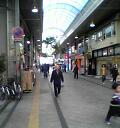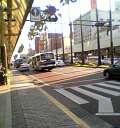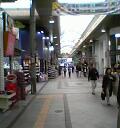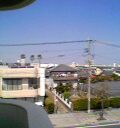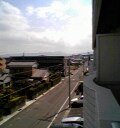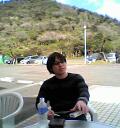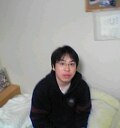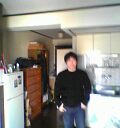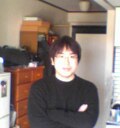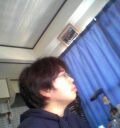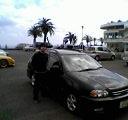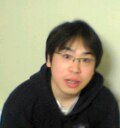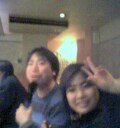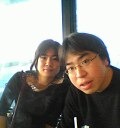
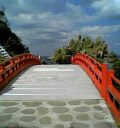
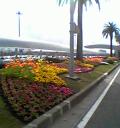



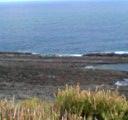
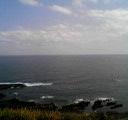
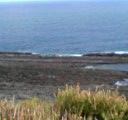
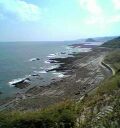
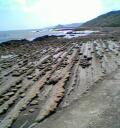
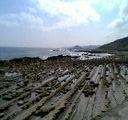
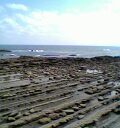
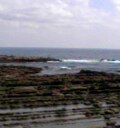
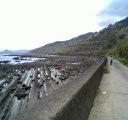
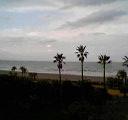
Oni no sentaku iwaAround 15-30 million years ago when layers of the ocean floor were eroded by waves. Wave-shaped rocks along the Aoshima beach, stretch over several kilometers. Like a wide step, some rocks form well-regulated lines, they are fantastic. It's worth seeing. On the ebb tide, you can see rocks in a row from 10m to 100m. It is moving. Very slippery. Watch out your step. cited from |


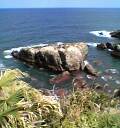
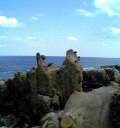
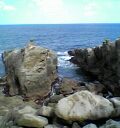
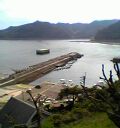
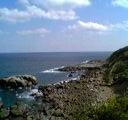
The Udo ShrinePreviously the Kanpei-Taisha?The Udo Shrine is home to Ugaya Fukiaezu-no-mikoto, the father of Japan's first emperor, the Jimmu Tennoh. The shrine itself is located in a cave on Udozaki, a small cape, at its far end. The cave is 32.72m from East to West and 38.18m from North to South, and the Shrine is painted bright red . Until the separation of the Shinto and Buddhist religions in the Meiji Era, there were 18 shrines known as Udo Gongen (incarnations of Buddha). Even after Shintoism and Buddhism were separated, the Udo Shrine kept the "Gongen" name, making the Shrine quite special because is historical background is evident in its name. The Shrine is also dynamic with large Pacific Ocean waves crashing against the rocks below it. It is said that the Shrine was established in the Sujin Tennoh era, and it is recorded that during the Kanmu Tennoh era, the Shrine was actually built. The current ediface was rebuilt in 1711 by Ito Sukezane, a local area leader. In 1968, the Shrine was renovated for the first time in 250 years. In February 1997, the main building's exterior passageways, wall murals, carvings, paintings, and copper roof were repaired, and the bright red paint reappeared. cited from |
